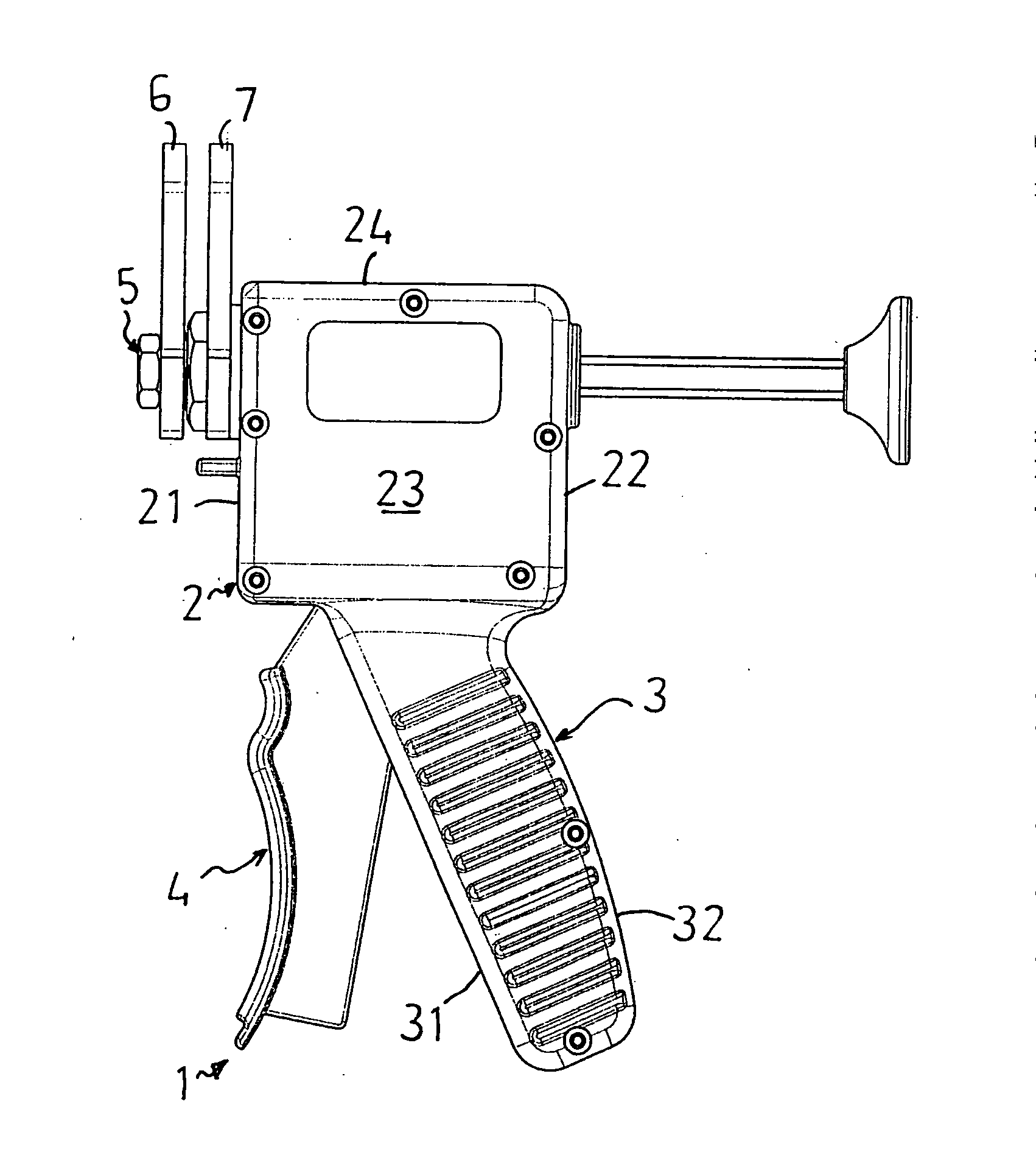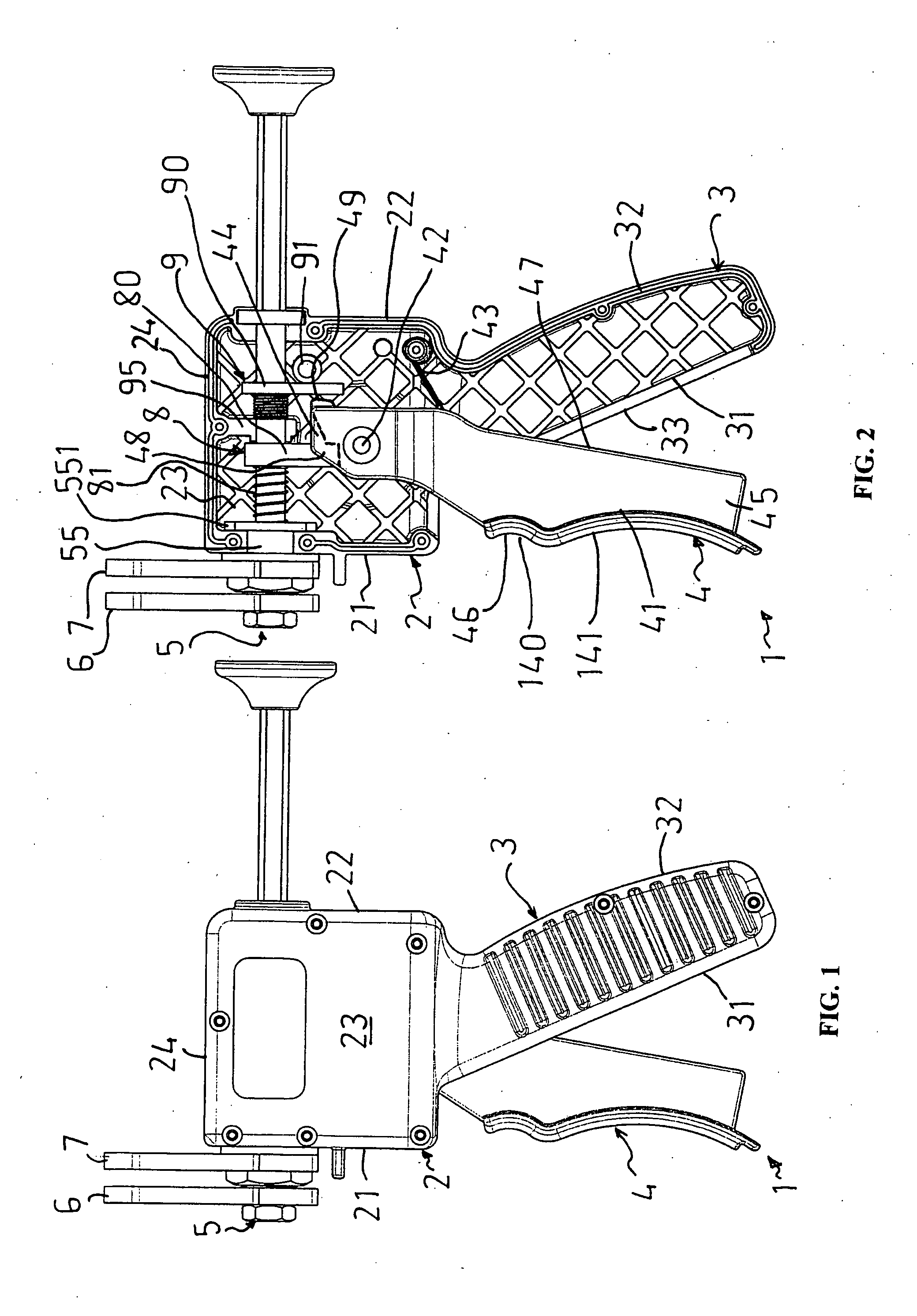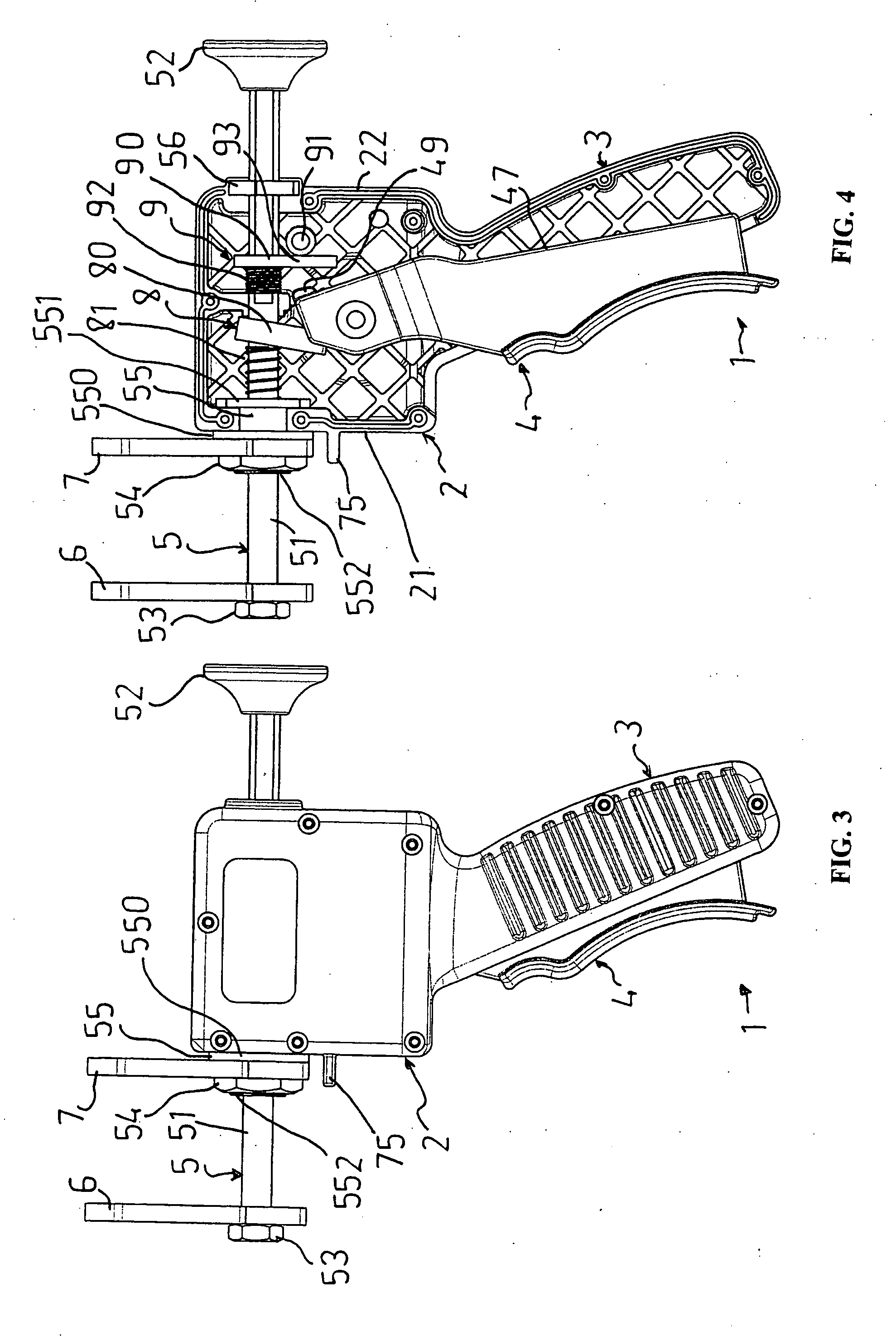Hand tool
a technology of hand tools and levers, which is applied in the direction of metal-working holders, supports, positioning apparatuses, etc., can solve the problems of difficult actuation of short release levers of shaft release mechanisms, used for one caliper unit types,
- Summary
- Abstract
- Description
- Claims
- Application Information
AI Technical Summary
Benefits of technology
Problems solved by technology
Method used
Image
Examples
Embodiment Construction
[0118]In the figures, like reference numerals refer to like features.
[0119]FIGS. 1-15 show a hand tool 1 for applying loads to first and second spaced apart surfaces, such as surfaces of a caliper unit of a vehicle disc-brake assembly. The tool 1 includes a body 2, a handle 3 extending from the body 2, a lever assembly 4, a shaft assembly 5, a movable load applying member 6, a fixed load applying member 7, a shaft drive mechanism 8 and a shaft release mechanism 9.
[0120]The body 2 has walls that provide a housing for various components of the tool. The housing 2 is in two detachable pieces (connected together with screws—not labelled) so as to allow ready access to components located within. As seen in FIGS. 1 and 2, the body 2 has a front wall 21, a rear wall 22, a pair of side walls 23 and a top wall 24. The body 2 is made of molded plastics material.
[0121]The handle 3 and body 2 are of unitary construction. The handle 3 is in the form of a pistol grip handle 3 extending from a low...
PUM
| Property | Measurement | Unit |
|---|---|---|
| Angle | aaaaa | aaaaa |
Abstract
Description
Claims
Application Information
 Login to View More
Login to View More - R&D
- Intellectual Property
- Life Sciences
- Materials
- Tech Scout
- Unparalleled Data Quality
- Higher Quality Content
- 60% Fewer Hallucinations
Browse by: Latest US Patents, China's latest patents, Technical Efficacy Thesaurus, Application Domain, Technology Topic, Popular Technical Reports.
© 2025 PatSnap. All rights reserved.Legal|Privacy policy|Modern Slavery Act Transparency Statement|Sitemap|About US| Contact US: help@patsnap.com



